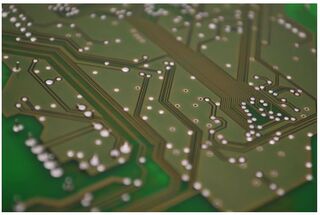Artificial Intelligence
The Future of Work
Artificial Intelligence is transforming work, but there is a long way to go.
Posted June 7, 2022 Reviewed by Ekua Hagan
Key points
- There is ample literature on the division of labor between humans and artificial intelligence (AI) and the roles of both in the workforce.
- The use of AI in the workforce does not guarantee a change in the relations of production between those who own capital and those who do not.
- The transformation in the labor force due to AI raises questions about social justice.
The 1st of May is celebrated as International Labor Day, as it historically marks the relentless struggle of the working class to get the workday reduced to 8 hours and the workweek to 40 hours (Al Jazeera, 2019).
The history of International Labor Day is rooted in the struggle for freedom and rights. It was initially called the "day of demonstrations," as peaceful protests for the demand of reducing working hours by workers in Chicago were countered by violence by the state. It also led to the sentencing to death of revolutionary leaders, who were tried only because of their political beliefs, without any evidence linking them to violence.
Although this movement for labor rights started in the West, it soon reached other parts of the globe as well, where non-Western countries like India, Bangladesh, and Pakistan also initiated similar demonstrations to support better labor rights and opportunities. For instance, in India, Labour Day (Sensharma, 2020) was first initiated by the "Labour Kisan Party of Hindustan" in 1923. Since then on May 1, India salutes its big working force, who are instrumental in determining the overall dynamics of the country’s economy.
Over the years, with continuous technological advancements, there have been profound changes in labor relations all over the world. A couple of questions that arise are: Will reorganization of labor (i.e., change in the division of labor between humans and machines by the inclusion of artificial intelligence, or AI) change relations of production between owners of production and workers—which is a fundamentally exploitative relationship by virtue of being unequal? Will it reduce oppression and give more agency to workers, or will it further rob them of agency?
Expounding on these questions will also be context-specific, and thus, it is important to ask: Will the infusion of AI into the labor force have similar or varying cross-cultural implications? Therefore, this post addresses the transformation of labor relations by the inclusion of AI in the labor force.
The purpose of AI in the workforce
The American philosopher Edward Reed questions how we define AI. His critique of AI stems from his inquiry on the purpose of AI.
He argues that the current research does not address the real problems of AI. Instead, it takes "artificial intelligence" as a given and then attempts to understand the problems it faces while attempting to solve the problems, which are already given by those who own AI. He argues that capitalists do not want "intelligent" workers; they have a tough time dealing with intelligent workers already.
Thus, an attempt to involve AI in the workforce is also an attempt not at reorganization of labor or reorganization of relations of production but a way of reducing autonomy and creating a de-skilled and alienated workforce. In the case of India, the problem that arises from an increase in automation in the workforce is that it is not at par with the creation of new jobs for people, which inevitably leads to an increase in unemployment (Desouza & Somvanshi 2019).
Different approaches to organizing labor
There are various approaches to organizing labor between humans and machines. Researchers suggest an approach that draws from the strengths of both AI and humans and combines those strengths for the highest level of productivity. This approach is what is called "the missing middle." The crux of this concept is that humans and smart machines work with each other to exploit each other’s strengths and enable what each party does best (Daugherty & Wilson, 2018).
On the other hand, other approaches argue for the reorganization of labor in a way that machines must be a part of decision-making (McAfee et al., 2017) and highlight studies that indicate a greater efficiency of data-driven decision-making as compared to decisions made by an expert.

AI's influence on relations of production
Although the division of labor between humans and machines can be organized differently, the question of whether this reorganization influences relations of production is unclear.
Addressing the liberatory potential of AI, Guha (2017) argues that the inclusion of AI in creative fields such as music and arts is inevitable. Along with the working class, even the service sector will be deeply impacted by the inclusion of AI in the workforce. For instance, in countries like Japan, there are restaurants that serve dishes like tempura and sushi through a machine. Chefs are mainly foreign workers who have the guidance of machines to churn out dishes, and the machines also predict how many customers will enter the restaurant in a given time (Suzuki & Nagumo 2018).
He centers the issue around the question of ownership and control of AI. It is the control of AI in the hands of a few people which is at the heart of the problem of AI and social inequalities.
Guha (2017) has suggested the importance of strong policy in order to combat inequalities in a society where AI prospers as well. The answer to whether there will be any change in the relations of production by a reorganization of the division of labor is that there cannot be a change when fundamentally the ownership of AI is in the hands of a few. Thus, the fact that only a small percentage of the population has control over AI technologies will inevitably be a barrier to AI being liberatory for the workforce. (Guha 2017)
Similarly, unequal international relations will certainly impact the accessibility to AI. The fundamental requirement for the possibility of AI to be liberatory is if there is the distribution of resources of AI technology-related education, access, and distribution of capital. Because of how they have been historically developed, AI technologies cannot be liberatory unless there is a change in the relations of production.
In conclusion, the questions of reorganizing the division of labor, which have been central to the discourse on the entry of AI into the labor force, do not address the question of relations of production. While incorporating AI into the labor force, questions of social justice must not take a backseat in countries that are making these advancements, and instead an approach that fundamentally foregrounds the relations of production and ownership of capital.
This post was written by Shivani Chunekar, Junior Research Assistant at the Department of Sociology at Monk Prayogshala, India.
References
Al Jazeera. (2019, May 1). May 1 Labour Day: What is International Workers’ Day? Human Rights | Al Jazeera. https://www.aljazeera.com/economy/2019/5/1/may-1-labour-day-what-is-int…
Guha, A. (2017, June 5). Labour and Artificial Intelligence: Visions of despair, hope, and liberation. Hindustan Times. https://www.hindustantimes.com/opinion/labour-and-artificial-intelligen…
McAfee, A., & Brynjolfsson, E. (2017). Machine, Platform, Crowd: Harnessing Our Digital Future (Reprint ed.). W. W. Norton & Company.
Daugherty, P. R., & Wilson, J. H. (2018). Human + Machine: Reimagining Work in the Age of AI. Harvard Business Review Press.
Sensharma, A. (2020, April 30). Labour Day 2020: History, Importance and Significance of May Day. Jagran English. https://english.jagran.com/lifestyle/labour-day-2020-history-importance…
Somvanshi, K. K. A. D. K. C. (2022, March 9). How India can prepare its workforce for the artificial intelligence era. Brookings. https://www.brookings.edu/blog/techtank/2019/04/22/how-india-can-prepar…
Writer, S. (2018, November 24). Japanese restaurants embrace robots as labor crunch bites. Nikkei Asia. https://asia.nikkei.com/Business/Business-trends/Japanese-restaurants-e…




